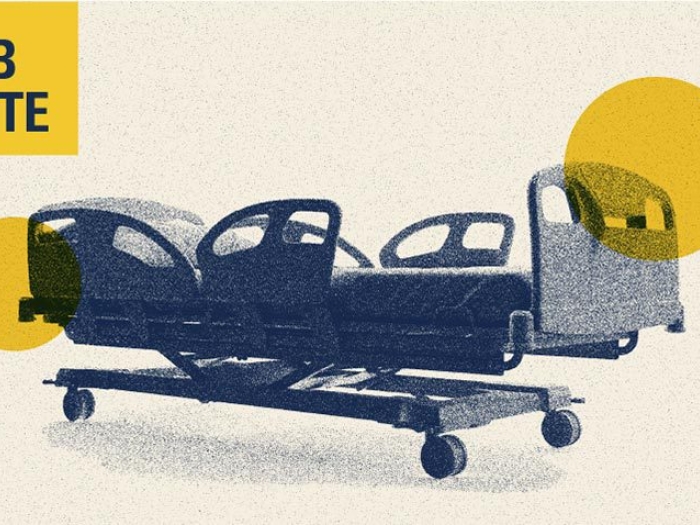Therapeutic tool used for children with kidney issues stemming from sepsis
4:45 PM
Author |

Prior to February 2024, limited therapeutics were available to treat sepsis, a life threatening organ dysfunction caused by a dysregulated host response to infection. Now, a new, commercially viable method of treatment is available to thousands of children with acute kidney injury who develop the often fatal condition.
Early diagnosis and treatment with antibiotics are currently the best approach to treating sepsis, but only two prior therapeutics have been FDA approved.
The FDA has now granted a Humanitarian Device Exemption Approval for a therapeutic device invented and developed at the University of Michigan for use in children with acute kidney injury and sepsis or a septic condition requiring continuous kidney replacement (dialysis with the artificial kidney) therapy in the intensive care unit.
The therapeutic device, called the selective cytopheretic device (SCD) or Quelimmune, is integrated into the blood circuit of the dialysis circuit used to treat patients with acute kidney failure. It can selectively calm the excessively activated white blood cells within the circulation, ameliorate tissue destruction, and has shown to reverse the course of sepsis to survival.
Pooled analysis from two pediatric clinical trials at U-M Health C.S. Mott Children's Hospital were compelling, resulting in HDE approval for this treatment in pediatric patients with severe sepsis and multiorgan failure.
“Blood poisoning”
Sepsis is widely known as “blood poisoning” that can arise from any infectious agent, triggering a cascading reaction of the body’s host response to fight the infection. This response is driven by the circulating white blood cells.
The severity of sepsis is not due to the invading pathogen itself, but from the excessive activation of the white blood cells to fight the infection. If this activation is uncontrolled and prolonged, these cells begin to attack and destroy not only the pathogen but indiscriminately most tissues of the body. The heart, lungs, kidneys, liver can be damaged and, depending on the severity and time before treatment, multiple organs may fail.
"Sepsis starts as a local infection, but once it gets into the bloodstream, there's a high mortality rate even if the patient starts an antibiotic,” said H. David Humes, MD, professor of nephrology and internal medicine.
“It’s like a brushfire that becomes a forest fire, and it's very hard to stamp out.”
White blood cells
Humes says that with technology available prior to the SCD, sepsis has a 50% mortality rate, even when treated in the best of circumstances. The SCD treats the primary cause of death from sepsis - the inflammatory system becoming excessive and unregulated. When this happens, the white blood cells begin to attack the tissues of the body, causing patients to have an unrelenting attack on their organs.
“Our technology focuses not on treating the bacteria, but treating this dysregulated immunologic system that is overreacting and destroying tissues within the body,” Humes said. “That's the breakthrough with this technology.”
Treatment with the SCD will be prescribed to children in intensive care. The device is attached to a pump system outside the body, which pumps blood through the device. The device captures the dysregulated white cells and through pharmacologic manipulation, calms the white cells and then releases them back to the circulation.
Sepsis is common, deadly
Nearly 2 million people and 75,000 children in the United States develop sepsis each year – greater than the number of individuals suffering from heart attacks or strokes. Sepsis kills 250,000 patients, including 7,000 children annually. The number of children dying from sepsis annually is greater than the number dying from all pediatric cancers combined, but providers are optimistic that technology like the SCD will increase the odds of patient survival.
“Sepsis causes lots of pain and difficulty for children in families, especially for patients too young to express themselves,” Humes said. “That’s why it’s so critical that we have effective methods of treatment that target the root cause of the infection.”
Disclosure: The SCD was developed in partnership with SeaStar Medical. Humes has a paid relationship with, and equity in, SeaStar Medical and is an inventor of the selective cytopheretic device technology licensed to SeaStar Medical.
Through its license agreement with SeaStar, the University of Michigan holds a small equity stake in the company.
Sign up for Health Lab newsletters today. Get medical tips from top experts and learn about new scientific discoveries every week by subscribing to Health Lab’s two newsletters, Health & Wellness and Research & Innovation.
Sign up for the Health Lab Podcast: Add us on Spotify, Apple Podcasts or wherever you get you listen to your favorite shows.

Explore a variety of health care news & stories by visiting the Health Lab home page for more articles.

Department of Communication at Michigan Medicine

Want top health & research news weekly? Sign up for Health Lab’s newsletters today!





